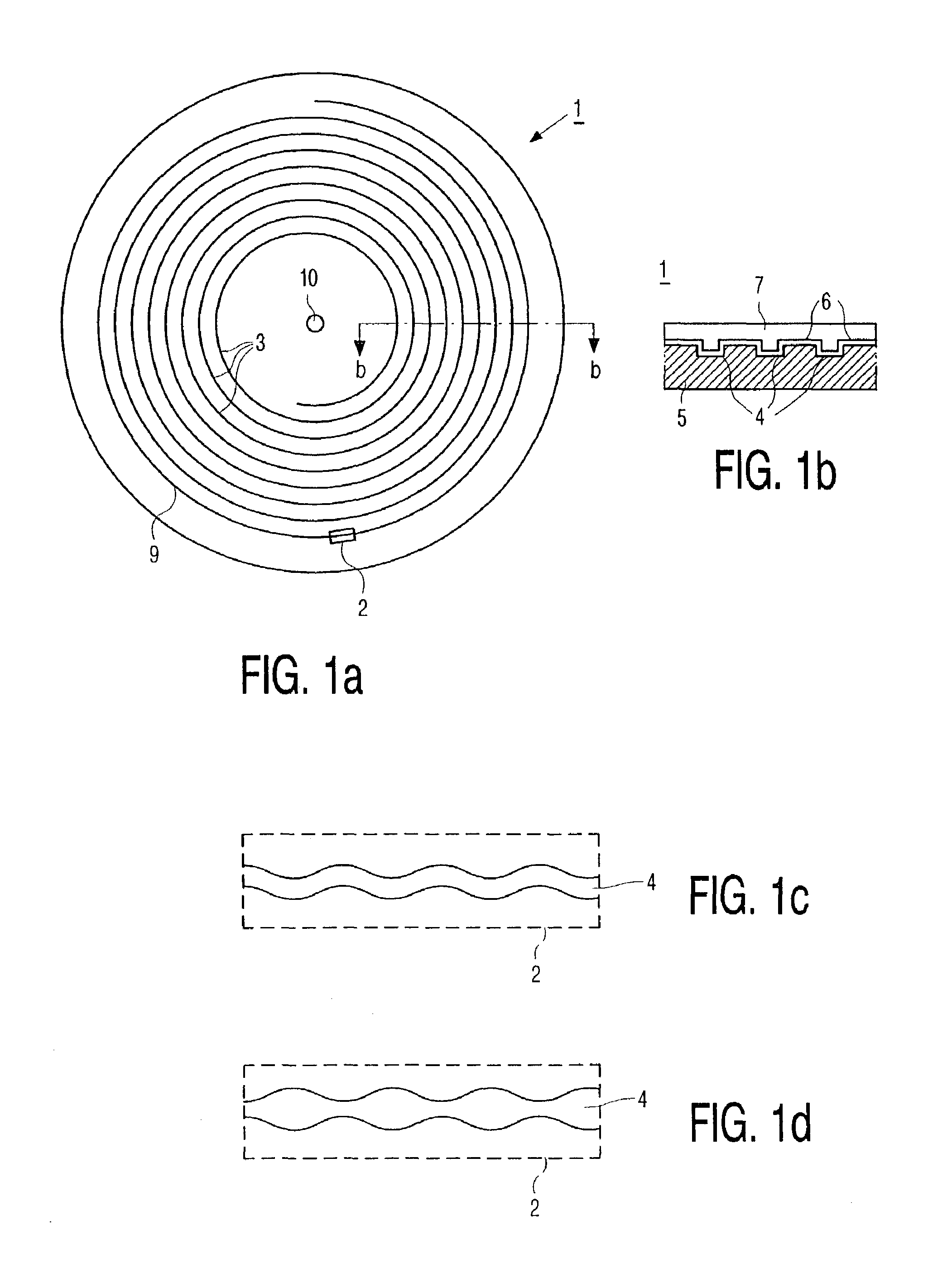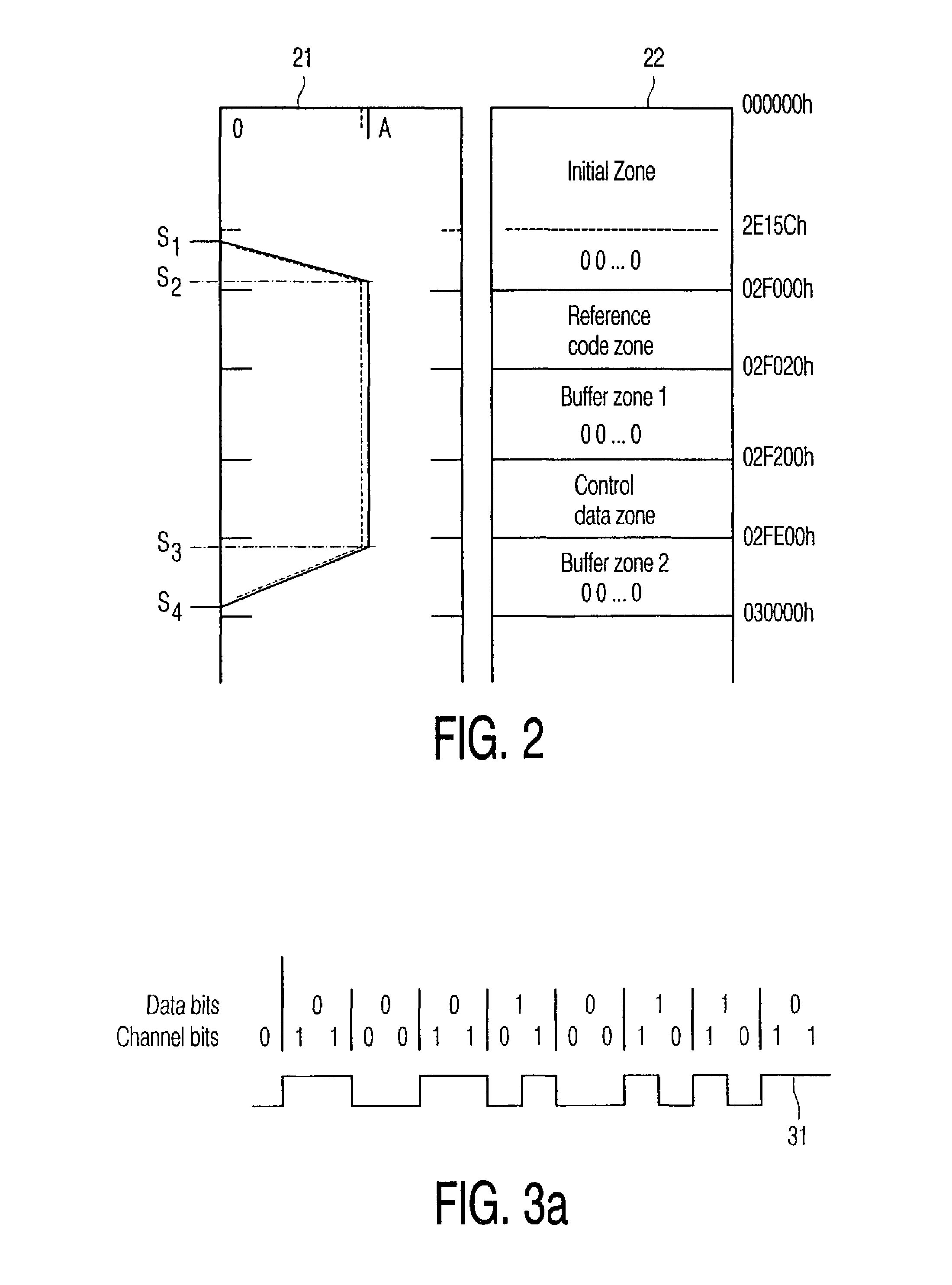Record carrier, playback device and method of recording information
a playback device and information recording technology, applied in the field of record carriers, can solve the problems of degrading the detection of recorded information, and the detection of the modulation pattern itsel
- Summary
- Abstract
- Description
- Claims
- Application Information
AI Technical Summary
Benefits of technology
Problems solved by technology
Method used
Image
Examples
Embodiment Construction
[0024]FIG. 1a shows a disc-shaped record carrier 1 having a track 9 and a central hole 10. The track 9 is arranged in accordance with a spiral pattern of turns constituting substantially parallel tracks on an information layer. The record carrier may be an optical disc having an information layer of a recordable type or of a prerecorded type. Examples of a recordable disc are the CD-R and CD-RW, and the DVD+RW, whereas the audio CD or the DVD video are examples of prerecorded discs. The prerecorded type can be manufactured in a well-known way by first recording a master disc and, via intermediate steps, subsequently pressing consumer discs. The track 9 on the recordable type of record carrier is indicated by a pre-embossed track structure provided during manufacture of the blank record carrier, for example, a pre-groove. The information is represented on the information layer by optically detectable marks recorded along the track. The marks are constituted by variations of a first p...
PUM
| Property | Measurement | Unit |
|---|---|---|
| radii | aaaaa | aaaaa |
| frequency | aaaaa | aaaaa |
| frequency | aaaaa | aaaaa |
Abstract
Description
Claims
Application Information
 Login to View More
Login to View More - R&D
- Intellectual Property
- Life Sciences
- Materials
- Tech Scout
- Unparalleled Data Quality
- Higher Quality Content
- 60% Fewer Hallucinations
Browse by: Latest US Patents, China's latest patents, Technical Efficacy Thesaurus, Application Domain, Technology Topic, Popular Technical Reports.
© 2025 PatSnap. All rights reserved.Legal|Privacy policy|Modern Slavery Act Transparency Statement|Sitemap|About US| Contact US: help@patsnap.com



